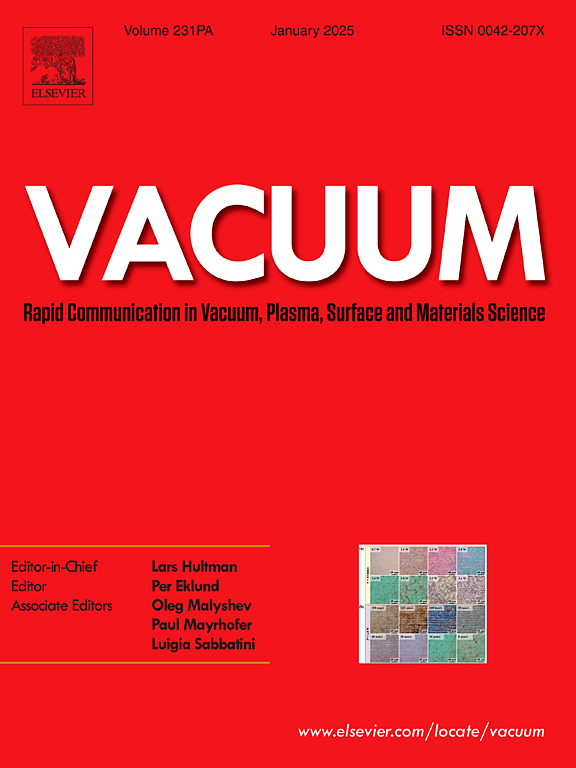Experimental study of self-healing performance of convergent monolithic embedded ferromagnetic fluid seal
IF 3.8
2区 材料科学
Q2 MATERIALS SCIENCE, MULTIDISCIPLINARY
引用次数: 0
Abstract
A convergent monolithic embedded ferromagnetic fluid seal structure is proposed and designed to improve the reliability of the seal under vacuum conditions. The capacity for self-healing and critical pressure were experimentally investigated for different axial sealing clearance, radial sealing clearance, number of radial teeth of the pole shoe, number of axial teeth of the pole shoe, and pole tooth height. The results show that when the axial or radial sealing gap is gradually increased to 0.4 mm, the self-healing performance of the convergent monolithic embedded ferromagnetic fluid seals shows the same pattern of enhancing and then weakening. As the number of radial teeth of the pole shoe increases, the self-healing performance of the convergent monolithic embedded ferromagnetic fluid seal first weakens and then strengthens before weakening. As the number of axial teeth in the pole shoe increases, the convergent monolithic embedded ferromagnetic fluid seal structure's ability to mend itself is initially strengthened and subsequently impaired. The self-healing performance of the convergent monolithic embedded ferromagnetic fluid seal structure increases with the increase in pole tooth height.
会聚单片嵌入式铁磁流体密封自愈性能实验研究
为提高真空条件下密封的可靠性,提出并设计了一种聚合整体嵌入式铁磁流体密封结构。实验研究了不同轴向密封间隙、径向密封间隙、极靴径向齿数、极靴轴向齿数和极齿高度下的自愈能力和临界压力。结果表明,当轴向或径向密封间隙逐渐增大到 0.4 毫米时,聚合整体嵌入式铁磁流体密封件的自愈性能表现出先增强后减弱的相同规律。随着极靴径向齿数的增加,聚合整体嵌入式铁磁流体密封件的自愈性能先减弱后增强再减弱。随着极靴轴向齿数的增加,聚合整体式嵌入式铁磁流体密封结构的自修复能力会先增强后减弱。聚合整体嵌入式铁磁流体密封结构的自愈性能随着极齿高度的增加而提高。
本文章由计算机程序翻译,如有差异,请以英文原文为准。
求助全文
约1分钟内获得全文
求助全文
来源期刊

Vacuum
工程技术-材料科学:综合
CiteScore
6.80
自引率
17.50%
发文量
0
审稿时长
34 days
期刊介绍:
Vacuum is an international rapid publications journal with a focus on short communication. All papers are peer-reviewed, with the review process for short communication geared towards very fast turnaround times. The journal also published full research papers, thematic issues and selected papers from leading conferences.
A report in Vacuum should represent a major advance in an area that involves a controlled environment at pressures of one atmosphere or below.
The scope of the journal includes:
1. Vacuum; original developments in vacuum pumping and instrumentation, vacuum measurement, vacuum gas dynamics, gas-surface interactions, surface treatment for UHV applications and low outgassing, vacuum melting, sintering, and vacuum metrology. Technology and solutions for large-scale facilities (e.g., particle accelerators and fusion devices). New instrumentation ( e.g., detectors and electron microscopes).
2. Plasma science; advances in PVD, CVD, plasma-assisted CVD, ion sources, deposition processes and analysis.
3. Surface science; surface engineering, surface chemistry, surface analysis, crystal growth, ion-surface interactions and etching, nanometer-scale processing, surface modification.
4. Materials science; novel functional or structural materials. Metals, ceramics, and polymers. Experiments, simulations, and modelling for understanding structure-property relationships. Thin films and coatings. Nanostructures and ion implantation.
 求助内容:
求助内容: 应助结果提醒方式:
应助结果提醒方式:


